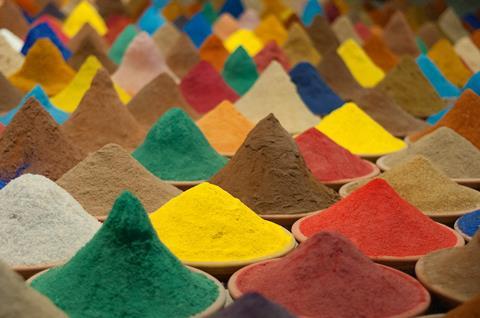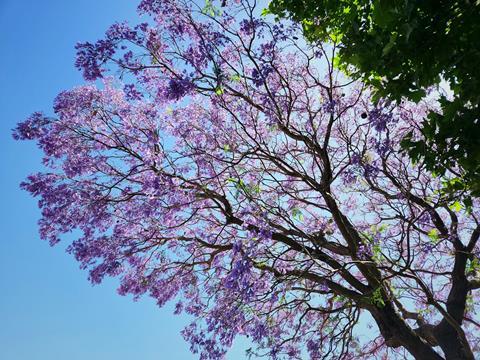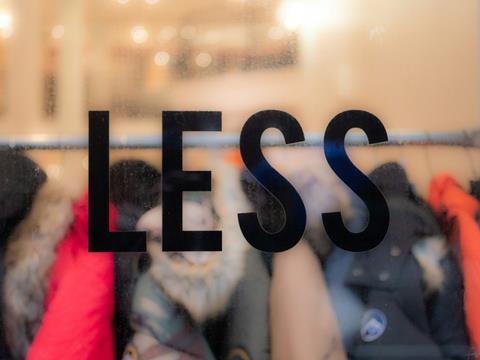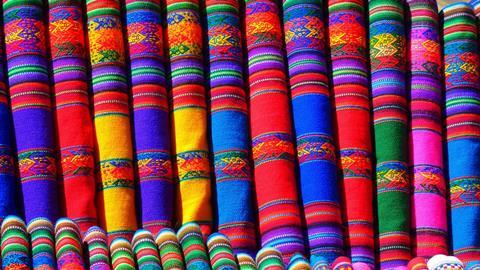Fashion enthusiasts and textile experts have explored the world for decades, trying to find the most sustainable fabrics and dyes. Materials like hemp and bamboo reign supreme over synthetics like polyester. Ethical, organic-certified variants replace conventional wool or cotton. Yet, dyes remain a stain on the sector’s reputation and Earth’s well-being.
Microbiologists are taking a different approach, leveraging microbes to forge some of the most eco-friendly options in history. Discover how microorganisms are birthing the next generation of clothing.
Why Dye Is Impossible to Get Out
Dyes are some of the most controversial aspects of the fabrics industry. However, exploiting the planet to grow ingredients for a shirt can have less of an impact, depending on the material. How do dyes leave such a negative mark on the planet’s health?

It is critical to understand it is not necessarily the color itself contaminating the world — it is the concoction of mordants and other compounds that make the color stick to clothes. The combination is resilient and hard to treat. Manufacturers design textiles to hold color, but they do break down eventually. The remnants are in landfills or collecting dust in linen or clothing closets. When pigment decides to seep out of fabrics, it is nearly impossible to remove from wastewater.
In 2014, researchers in China discovered 72 unique toxic chemicals in water samples originating from textile dyes, and makers use thousands of shades worldwide. The problem also encompasses the want to bleach or whiten fabrics to make them more appealing to markets. The carcinogens and toxins required for these processes compound environmental worries. The pollutant density degrades aquatic ecosystems, leeches into the soil, permeates the air and makes its way into humans.
Harvesters used to derive dyes from natural sources like flowers or other living organisms. However, it became cheaper and faster to manufacture them. This is not the first instance the fashion and textiles industries have turned to non-renewable resources to sustain their monetary growth. It became more important to affix dye to clothing than to consider the consequences of engineering that strong of a bond.
The World Resources Institute performed an analysis of the dyeing sector in 2017. Reducing reliance on natural sources and freeing up agricultural lands will save 1.3 trillion gallons of water. It will also stop billions of pesticides, heavy metals, and other contaminants from entering the earth. This led microbiologists to research how well microbes could grow sustainable dyes.
Experiments in DNA Sequencing
A UK project has made headway. It is an experiment in DNA sequencing and fermentation, which yields pigment-producing microorganisms. It removes chemicals from the equation, immediately reducing ecological harm.
The method uses a fraction of the water, lowering carbon footprints and increasing water access. The fashion and fabric industries are significant contributors to water scarcity with how much they use and waste, so any savings are worth attaining.
The innovation could be more monumental than sustainably harvested dyes. Instead of taking it from the environment, scientists extract the DNA that has the ability to develop color. The microbes may be grown exclusively in lab environments. Then, experts can attach the pigments to clothes directly, which streamlines the supply chain and production to a single process. Several test examples were effective.
Blue Jacaranda
One showed flourishing microbes obtained from Blue Jacaranda, which provided the legendary pigments for denim in the late 1800s. Now, the blooms can remain in their habitats, and microbiologists can experiment with the transformative potential of the pigment, even creating shades of pink and lavender.

Geyser Bacteria
Pulling microbes from geyser sites produced fascinating results. Scientists believed the sample would only create one color option, but the results changed when researchers altered the bacteria’s living conditions. For example, adjustments to pH or temperature created an array of colors, including sea foam, blush, and a sandy tan. This informed researchers that finagling with the growing environment may alter pigment production in further experiments.
Protein Power
Another startup took a similar approach but focused on making microbes express colorful proteins. The bioengineers found naturally vibrant organisms like coral to source the proteins. Then, they wove them with biopolymers to forge an already dyed fabric — no separate, chemical-laden finishing phase necessary.
The biomaterials project started because the founder’s textile development studies revealed obscene negligence in the fashion supply chain. An attempt to create wool containing no animal products opened the door to more regenerative ideas. Self-assembling proteins are building blocks for living things, and these researchers postulated they could create other items like sustainable fabrics embedded with dye.
Researchers discovered several obstacles to this idea. First, the process was prohibitively expensive and would not be market-viable enough to yield the desired climate impact. Additionally, other edits to the proteins would need to make the foundational fibers resilient to environmental conditions, like fluctuating temperatures.
Engineers found solutions using a recipe of plant-based proteins, cross-linked enzymes, and polysaccharides. The ingredients change the structure of the amino acids, making everything stick together. Precision fermentation was crucial to formulation, while other initiatives use alternative forms of microbial fermentation. Additionally, reducing protein concentrations made the fabrics more affordable — hopefully, this will entice investors and partners.
The implications of this experimentation are monumental, potentially rendering other harmful materials obsolete. This includes per- and polyfluoroalkyl substances, also known as PFAS or forever chemicals. It would also make synthetic stretchy fabrics unnecessary if the gluing properties of the proteins are as strong as something akin to elastic.

Kombucha and Melanin
Scientists develop stretchy, temperature-resistant fabrics and dyes in laboratories. However, there are plenty of other destructive fabric options out there, such as leather or petroleum-based pleather. Bioengineers are also tackling this side of fashion by forging a pre-dyed substitute derived from the melanin in kombucha.
Synthetic biologists are optimistic this innovation will shift material manufacturing. Cellulose is a sturdy, plant-based material that provides the base layer for the leather alternative. It is also highly malleable, allowing fashion makers to easily customize its shape and size. This could make its way into industries reliant on similar materials, like the automotive industry.
Cellulose is already creating sustainable fabrics, such as Bemliese. It can formulate a 100% upcycled textile from cotton linter. This encourages circular economic mentalities in an industry with low biodegradability and waste awareness.
Instead of using plants, researchers source them from bacteria. They wondered if it could produce a different color of cellulose, something richer and darker to remove the need for chemical pigments. Tests used a species commonly found in kombucha fermentation. When bioengineered, it made black melanin.
Much like the aforementioned experiments adjusted environmental conditions, these individuals discovered similar correlations. If this bacteria lived in a too-acidic bath, the color would have no vibrancy. A quick procedural update maintained a consistent pH, so it consistently made black pigments.
This is one of the few studies experimenting with pattern-making. Customization is such a prominent component to textile purchasers, so it was a research gap they needed to fill. They engineered the kombucha bacteria to make pigments only in certain conditions, such as under specific types of light. Scientists could control pattern creation on cellulose sheets, assembling bespoke garments in a lab.
What Is Next
If projects like these do not continue to receive funding, publicity, and buy-in, then unsustainable practices in the fabric industry will continue to contribute to the climate crisis. The unlikely worlds of biotechnology and textiles must collide to make every sector using textiles greener.
Many of these startups will struggle to keep production going. The manufacturing techniques are novel, and companies may want to avoid adopting an operational shift to this scale. Leaders in these initiatives must spread education about the microbial potential for textile and dye creation because most resistance arises from a need for more awareness.
Vendors and manufacturers are more likely to be convinced of its marketability by knowing its advantages and sustainability benefits, as well as innovative thinking. These will help corporations in an already toxic industry become kinder. This is necessary to obtain a competitive advantage for consumers becoming increasingly dedicated to eco-friendly causes.
The sustainable apparel market may be worth $20.51 billion by 2030 because of consumer desires. It is also ascending because of more intense regulatory compliance. Companies must assume corporate social responsibility by reporting environmental, social, and governance metrics to the appropriate parties to stay in business. Otherwise, greenwashing claims and bad press will harm any enterprise using chemical-laden dyes and treatments.

Growing Fabric
The textiles and fashion industry is one of the most unnecessarily exploitative and polluting history has seen. Dismantling fast fashion and adopting eco-friendly fabrics has been an effort of activists and educators worldwide. Studies in microbial fabric and dye construction could provide an accessible answer for many enterprises wanting to change their legacies. It is a necessary and logical step in preventing pollution, reducing water, and curbing waste in the sector.








No comments yet